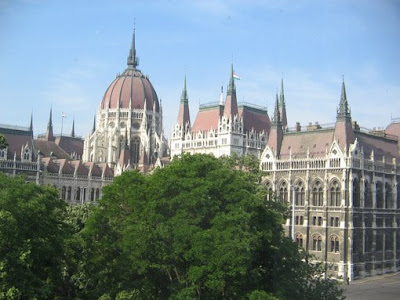
As promised here's a bit of what we got up to...
Friday 15th May - after successfully avoiding buying scratch cards and electric cigarettes on the flight we arrived in Budapest early evening and were given a lovely tour of the city by our chaufer - over the chain bridge and back again - before being dropped off at our apartment just near the parliament building.
With a hard days interviewing ahead of us we went out in search of food and a Pizza and a Pint later were tucked up in bed getting our beauty sleep ready for the next day.
Saturday 16th May - Our first port of call is the Studio of Young Artists Association (well after a picnic in the park and a quick look round the Basillica of St. Stephen) where we met with Borbala Szalai.
The studio has been going for 50 years and is primarily for artists under the age of 35, although there are opportunities for artists over 35 to remain/become members.
The not for profit organisation is artist run but there is a change every 4 years in who runs it, there is also a voluntary board and 2 paid members of staff.
Exhibitions are held every 3 weeks (we managed to catch Borbala in the middle of a change over!) and there are 2 opportunities a year for members to apply for these exhibitions, although non-members are also considered for exhibitions.
As well as an exhibition space there is a library and common area, Studios that members can use for 6 month periods, international exchanges and at least 1 group exhibition per year held in a different venue. There is also the billboard project not far from the gallery as seen in the picture above.










